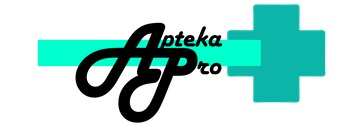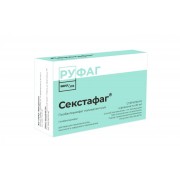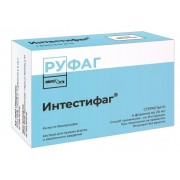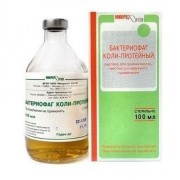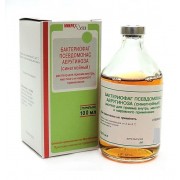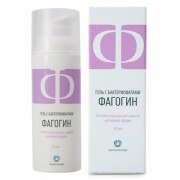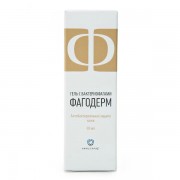Presentation
Solution for oral, local and external administration, 20 ml or 100 ml ampoules Four or ten 20 ml vials or one 100 ml vial in each cardboard package
Ingredients
The preparation is a sterile filtrate of phage lysates of Streptococcus strains.
Excipient: preservative – 8-hydroxyquinoline sulfate monohydrate - 0.0001 g/ml (equal to 8-hydroxyquinoline sulfate, estimated content).
Indications
Treatment and prevention of diseases caused by Streptococcus as part of the complex therapy:
- diseases of the ear, nose, throat, respiratory tract and lungs - inflammation of the sinuses, middle ear, tonsillitis, pharyngitis, laryngitis, tracheitis, bronchitis, pneumonia, pleurisy;
- surgical infections - festering wounds, burns, abscesses, cellulitis, boils, carbuncles, hidradenitis, panaris, perirectitis, mastitis, bursitis, osteomyelitis;
- urogenital infections - urethritis, cystitis, pyelonephritis, colpitis, endometritis, salpingo-oophoritis;
- enteric infections - gastroenterocolitis, cholecystitis, intestinal dysbacteriosis;
- Generalized septic diseases;
- purulent inflammatory diseases of newborns - omphalitis, pyoderma, conjunctivitis, gastroenterocolitis, sepsis, etc.;
- other diseases caused by Streptococcus.
For the prevention purposes the drug is used for the treatment of post-surgical and newly infected wounds, for the prevention of hospital-acquired infections on epidemic indications.
Dosage and administration
The drug is used for oral administration (through the mouth), rectal administration, applications, irrigation, introduction into the wound cavity, vagina, uterus, nose, sinuses and drained cavities.
Recommended Dosages
| PATIENT AGE | DOSE FOR 1 RECEPTION (ml) | |
| inside | in an enema | |
| 0-6 months | 5 | 5-10 |
| 6-12 months | 10 | 10-20 |
| from 1 year to 3 years | 15 | 20-30 |
| from 3 to 8 years | 15-20 | 30-40 |
| from 8 years and older | 20-30 | 40-50 |
Treatment of purulent-inflammatory diseases with localized lesions should be carried out simultaneously both locally and by taking the drug inside for 7-20 days (according to clinical indications).
If chemical antiseptics were used to treat wounds before the use of the bacteriophage, the wound should be thoroughly washed with a sterile 0.9% sodium chloride solution.
Depending on the site of infection, the bacteriophage is used:
In the form of irrigation, lotions and plugging in a volume of up to 200 ml, depending on the size of the affected area. In case of an abscess, after purulent contents have been removed by puncture, the drug is administered in an amount less than the volume of pus removed. In osteomyelitis, after appropriate surgical treatment, a bacteriophage of 10-20 ml is poured into the wound.
When introduced into the cavity (pleural, articular and other limited cavities) up to 100 ml, capillary drainage is left through which the bacteriophage is administered for several days.
With cystitis, pyelonephritis, urethritis, the drug is taken orally. If the cavity of the bladder or renal pelvis is drained, the bacteriophage is injected through the cystostomy or nephrostoma 1-2 times a day, 20-50 ml into the bladder and 5-7 ml into the renal pelvis.
With purulent-inflammatory gynecological diseases, the drug is injected into the cavity of the vagina, uterus in a dose of 5-10 ml once a day, with colpitis - 10 ml by irrigation or tamponation 2 times a day. Tampons are laid for 2 hours.
With purulent-inflammatory diseases of the ear, throat, nose, the drug is administered at a dose of 2-10 ml 1-3 times a day. The bacteriophage is used to rinse, rinse, instill, administer moistened turundas (leaving them for 1 hour).
In case of enteric infections, intestinal dysbiosis, the drug is taken orally 3 times a day 1 hour before a meal for 7 to 20 days according to clinical indications. It is possible to combine a two-time oral administration with a single rectal administration of a single age-related dose of the bacteriophage in the form of an enema after bowel movement.
The use of bacteriophage in children (up to 6 months).
With sepsis, enterocolitis in newborns, including premature babies, the bacteriophage is used in the form of high enemas (through a gas tube or catheter) 2-3 times a day at a dose of 5-10 ml. In the absence of vomiting and regurgitation, the use of the drug through the mouth is possible. In this case, it is mixed with breast milk. A combination of rectal (in the form of high enemas) and oral (through the mouth) use of the drug is possible. The course of treatment is 5-15 days. With a recurring course of the disease, repeated courses of treatment are possible. In order to prevent sepsis and enterocolitis during intrauterine infection or the risk of nosocomial infection in newborns, the bacteriophage is used as enemas 2 times a day for 5-7 days.
In the treatment of omphalitis, pyoderma, infected wounds, the drug is used in the form of applications twice daily (a gauze cloth is moistened with a bacteriophage and applied to the umbilical wound or the affected area of the skin).
